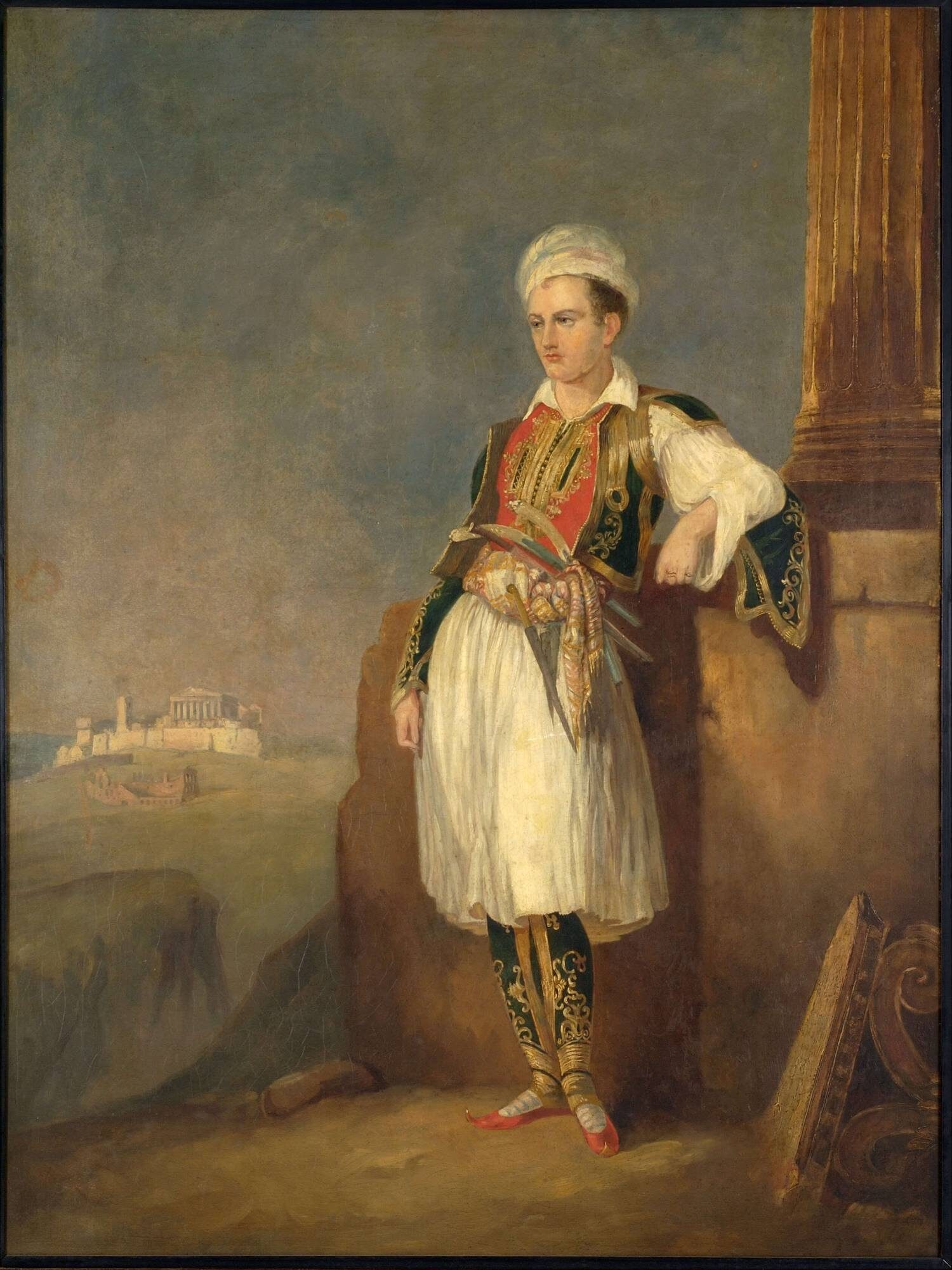Excerpts of a young Baron’s travelogue: Byron and Hobhouse in Mediterranean Europe
As the post-Covid news cycle regularly reminds us of travel corridors, quarantine requirements and localised lockdowns, I have begun to wonder if holidays have ever been so stressful.
A browse of the travel manuscripts collected in Nineteenth Century Literary Society reminds me otherwise.
On July 2nd, 1809, British statesman and diarist John Cam Hobhouse set sail with the most fashionable poet of the early nineteenth century, Lord Byron. On their journey from Falmouth to Malta via Portugal and Spain, Hobhouse kept attentive notes of their daily routines and social engagements, intending to publish a prose account of their adventure.
Hobhouse’s diary of his travels, translated from Latin, details the lively and sometimes scandalous encounters one might expect from such a characterful couple. Even in the very first entry, Hobhouse describes an unfriendly welcome: ‘…arrived at Lisbon 10 A.M.; fled from beggars in a boat across the river’.

Portrait of Lord Byron. Unknown artist, c. 1830. Access via Wikimedia Commons.
On one particularly eventful day, the pair visit a monastery in Belem where they are ‘shewn an entire embalmed body of King Ildefonsus, 302 years old’. Later, after a visit to the theatre, Hobhouse simply writes: ‘attacked in street by four men – walked half-way home’. Their fortunes turn in Spain, as the diary records nights spent at ‘the lodgings of two unmarried ladies’ with offers of ‘wine and biscuits!!’
Byron’s notorious charm becomes evident here: on July 27th a lieutenant in the Spanish service offers to become his servant, and the next day a hostess invites Byron to ‘come to her room at 2 o’clock’. In Gibraltar, however, their itinerary starts to resemble one of my average weekends: ‘Got up at 3 P.M. Did nothing, either of us’.

Galley proof of translations from Latin of John Cam Hobhouse's diary of his travels with Byron in Portugal, Spain and Italy, c.1815, © The National Library of Scotland. Further reproduction is prohibited without permission.

Frontispiece to the 1826 edition of Childe Harold's Pilgrimage. Engraving by I. H. Jones, 1825. Access via Wikimedia Commons.
In the background, behind reviews of bad dinners and good company, the diary traces shadows of the political tensions of the time: days after their initial arrival in Lisbon, Hobhouse and Byron watch the ‘review of British troops under General Crauford’ – reinforcements against Napoleonic occupation.
When they reach Spain, the pair pass through Albuera and see ‘a field of battle, fought in May last, between French and Spaniards – the ground beat up by cavalry’, and overtake ‘two French prisoners, and a Spanish spy going to be hanged at Seville, 70 years old’. They reach Malta on August 31st, where Hobhouse comments that the grand harbour entrance ‘[surpassed] every conception of that place’.
During this period Greece was under Ottoman rule, and it was here that Byron first learned of the Greek struggle for independence – a cause he would later die fighting for in 1824.
Though these notes are typed out as galley proofs, perhaps intended for review for publication, Hobhouse’s travelogue was never destined to be a John Murray bestseller. Instead, Byron stole the spotlight as he was prone to do, and drew inspiration from his Continental tour to produce a literary sensation: Childe Harold’s Pilgrimage, the narrative poem that would secure his overnight fame back in England.
If only nineteenth-century readers knew their real-life Byronic hero was eating biscuits and sleeping through the afternoon.
About the collection
Nineteenth Century Literary Society is out now.
Recent posts

The blog highlights American Committee on Africa, module II's rich documentation of anti-apartheid activism, focusing on the National Peace Accord, global solidarity, and student-led divestment campaigns. It explores the pivotal role of universities, protests, and public education in pressuring institutions to divest from apartheid, shaping global attitudes toward social justice and reform.

This blog examines how primary sources can be used to trace the impact of young voices on society, particularly during pivotal voting reforms in the UK and the US. Explore materials that reveal insights into youth activism, intergenerational gaps, and societal perceptions, highlighting their interdisciplinary value for studying youth culture, activism, and girlhood across history.
